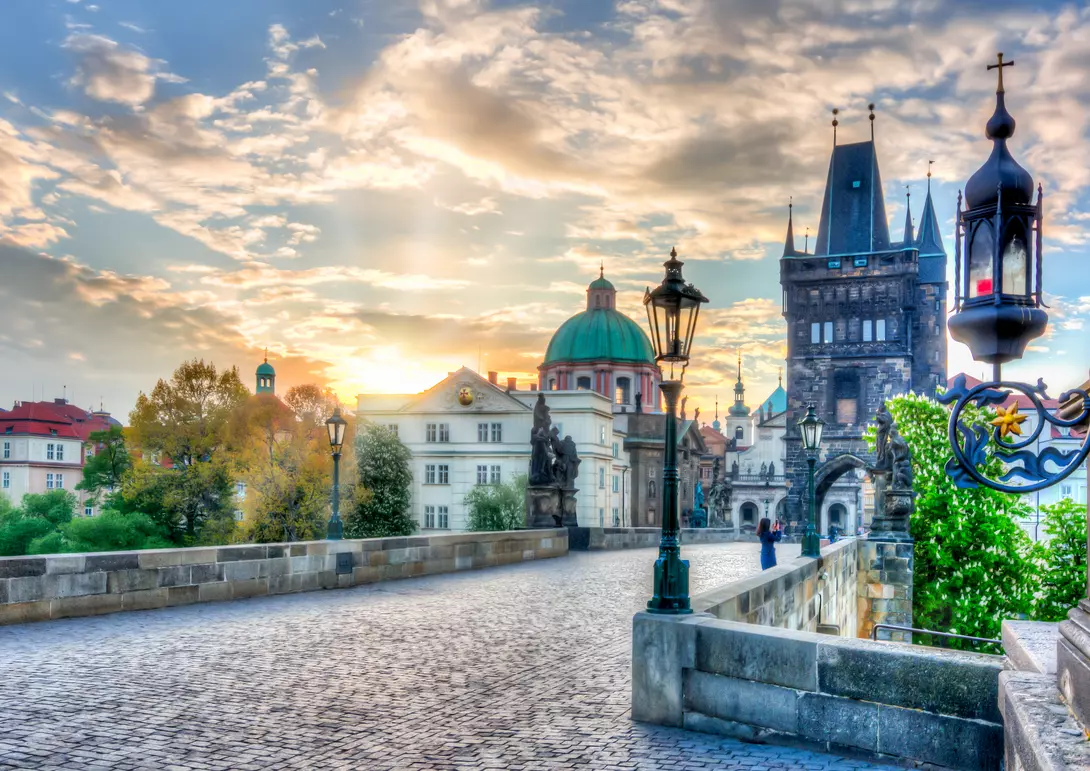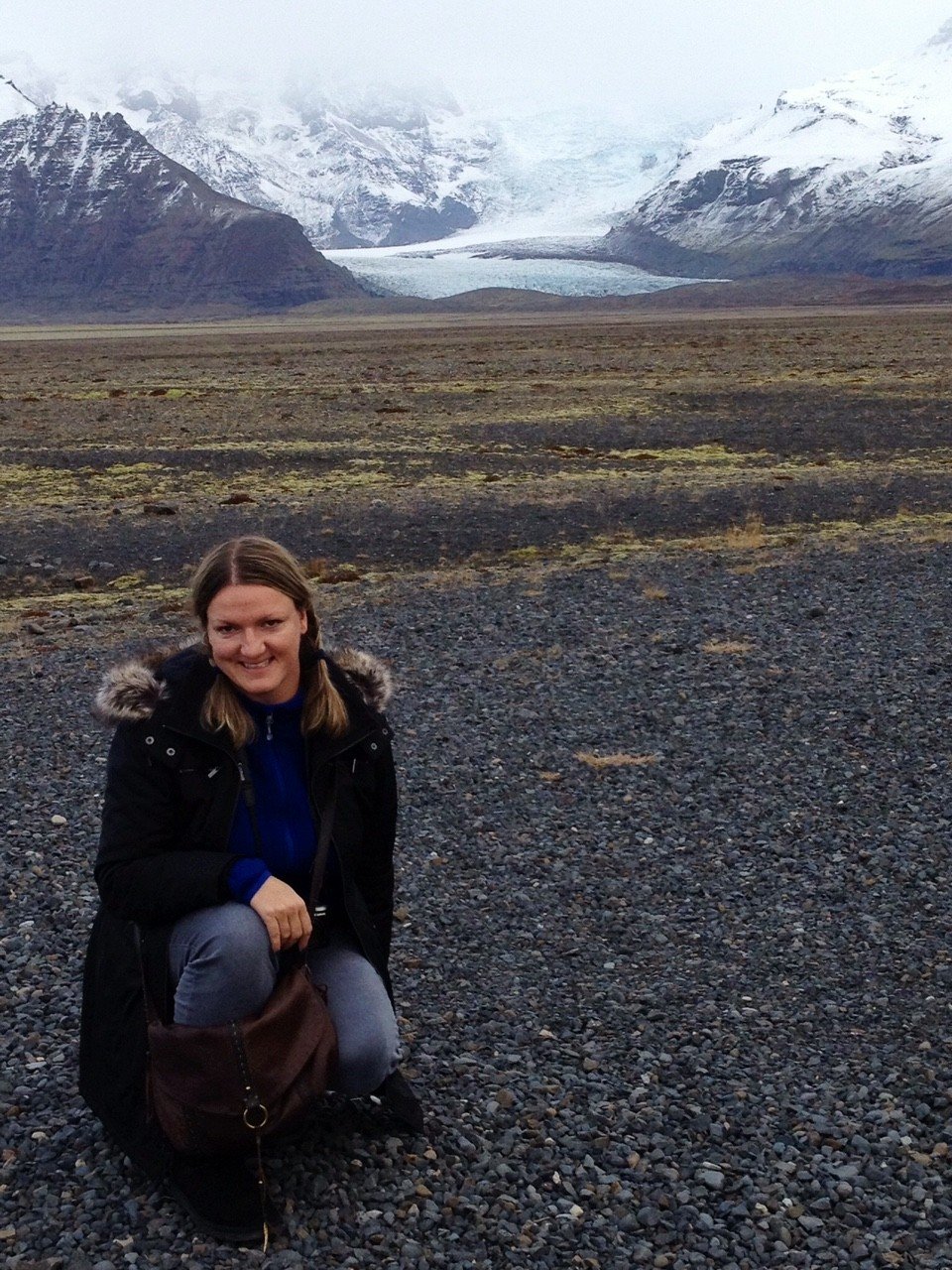Everything you need to know about travelling to Czechia.
Essential Facts
Currency
The official currency of Czechia is the Czech Crown (Koruna), even though the country is a member of the European Union. Euros are not commonly accepted, so be sure to have some crowns on hand. ATMs are common and credit cards are accepted at many restaurants and hotels in the larger cities.
Language
The official language is Czech, with an estimated 98% of all citizens in the country speaking Czech. While tourism professionals and some people in the larger cities will understand English, it’s not common.
Best Time To Go
In Czechia, the best time to visit is during the spring (March to May), as it has comfortable temperatures and little rainfall. Summer (June to August) is the high tourist season and has the warmest temperatures, although Czechia is less crowded than most. Fall is another great time to visit (September to October) as it has fewer crowds and less rain, although it can get chilly. Winter is low season and the weather is cold, but keep in mind that Czechia has some of the best Christmas markets in the world.
Climate
The climate in the Czechia is very typical of the rest of Europe, with warm, dry summers and cold winters. Temperatures in the winter typically hover around 2°C–9°C/36°F–48°F. Spring (March to May) brings a temperate climate with almost no rain and sunny days, with temperatures typically averaging 9°C–20°C/48°F–68°F. In the summer, temperatures are warm and it can be humid, usually ranging from 24°C–26°C/75°F–78°F. Fall brings comfortable touring temperatures that range from 13°C–24°C/55°F–17°F.
Ideal Traveller
Czechia is especially fascinating for travellers interested in history, particularly the fall of communism in 1989 and how the Czecia has evolved since that time. Prague is one of the most attractive cities in Europe, with plenty to attract history buffs, foodies, and cultural travellers. Combining castles and chateaus, history and tradition, music and the love of food and of course beer, Czechia appeals to most travellers.
Getting There From North America

Major Airports
There are five airports in Czechia, but there is only one used for flights that arrive from North America: Prague Vaclav Havel Airport. It serves more than 12 million passengers annually. It is about 10km/6mi from the Prague city centre. Brno Airport is significantly smaller and provides many connections within Europe, especially during the summer holiday season.
Recommended flight route from the United States
There are no direct routes from the United States to Czechia. Travellers will need to connect through one of the major airports in Europe, such as London Heathrow, Amsterdam, and Frankfurt.
Recommended flight route from Canada
There are no direct flights from Canada to Czechia. Canadian flights connect through one of the major cities in Europe, such as London or Frankfurt.
Essential Sights of Czechia

Prague
The historical capital of Bohemia and the capital of Czechia, Prague. Since the fall of communism in 1989, the city has become one of Europe’s trendiest cities. The Old Town, with its ancient chapels and cobblestone streets, historic buildings and museums, is spectacular. Culture is at the heart of the city, with the musical influences of Mozart and other classical composers to the modern urban street art around the city keeping the atmosphere vibrant.
Cesky Krumlov
Cesky Krumlov is about four hours from Prague and can easily be visited on a day tour. Cesky Krumlov Castle sits above the town and the Vltava River, and is the second largest castle in Europe, spanning 40 buildings and palaces over seven hectares. The town itself has a unique charm and is full of colourful houses that survived destruction in World War II.
Plzen
Plzen (Pilsen) is the industrial beer capital of Wehstern Bohemia. It is the home of Pilsner lager, which was first created here in 1842. There are beer trails that pass through 14 of the best known breweries in the region, providing opportunities to learn about this centuries-old practice.
Kutna Hora
Kutna Hora, which means “The City of Silver,” earned its name from the silver mines that were established here in the 13th century. About one thrid of all silver produced in Europe came from this region. The town has remained a popular location for day trippers from Prague. Its historical attractions include the churches of St. Barbara and the Cathedral of Our Lady of Sedlac, as well as the stunning “Bone Chapel” of Sedlec Ossuary.
Other Highlights of Czechia Off the Beaten Path

Mlada Boleslav
Mlada Boleslav is a historic Czech city that happens to be home to the modern European car maker Skoda. Life in the town has been influenced greatly by Skoda, which has resulted in the opening of the Skoda Auto Museum, which celebrates 100 years of uninterrupted automaking history. The town also has an old town square and the Mlada Boleslav Castle dating back to the 10th century.
Vltava River
The Vltava is the longest river in Czechia, flowing for 430km/267mi. There are many ways to experience the beauty and history of the river. You can visit castles along the way, like Vitkov Castle or Castle Vltavou, or head to lookout points, monasteries and museums over the river. You can also arrange to kayak the river or take a boat cruise for a relaxing guided experience.
Divoka Sarka
This is a perfect destination for hiking, swimming, and even golfing. The name means “Wild Sarka” after the mythical female warrior who allegedly threw herself off one of the cliffs. It is a rugged landscape of steep rocks, groves, and upland plateaux that’s great for hiking, cycling, or rock climbing.
Terezin
Terezin is a small countryside town today, but it has a dark history, serving as one of the Nazis’ prisons, ghettos, and concentration camps during World War II. More than 150,000 Jewish people were imprisoned here. Tours to Terezin include visiting the monuments, memorials, and museums while learning about this tragic, dark chapter in Czech history.
Top Activities and Experiences in Czechia

Prague’s Alleys and Street Art
While there are many beautiful museums and galleries where the finest Czech art can be viewed, the streets of Prague are the best place to see the most current and authentic pieces of modern Czech art. Street art became popular in the 1980s as the communist era was coming to a close. Artists of the time took their creative spirit to the streets to create artworks celebrating democracy and freedom from the Eastern bloc. Today, you won’t just find street art on the walls around the city, but also sculptures and art exhibits, such as the Lennon Wall.
Visit Prazsky Hrad (Prague Castle)
Prague Castle was built in the 9th century and is one of the largest castles in Europe. Over the past 11 centuries it has been under continuous development. The castle was originally home to the princess and kings of Bohemia since 1918, but today is the official residence of the president of the republic. On a tour of the castle, you’ll also find historical palaces, offices, gardens, churches, and the adorable miniature street of Golden Lane.
Beer Spa Experience
The tradition and cultivation of beer has a long history in Czechia, so it’s no coincidence that the country has the world’s highest beer consumption per capita. The popularity of beer has resulted in Beer Spas across the country. There are several beer and wellness spas around Czechia where you can bathe in beer while sitting in Royal Oak tubs, which are an eternal symbol of longevity and endurance. Drink a beer and enjoy a good soak—what’s not to like?
Sedlec Ossuary
Located in Kutna Hora, this nondescript Gothic chapel is known as the Church of Bones due to the interior decoration of its sanctuary that incorporates more than 40,000 human skeletons. The bones were collected in the 15th century and in the 1800s, a wood carver decorated the chapel with the bones. The highlight of this macabre chapel is the chandelier, which contains at least one of every human bone.
Essential Czech Foods to Try

Schnitzel
Many dishes that are traditional in Czechia are central to other European countries, like schnitzel. Each national version varies according to the type of meat used, with Czech and German versions typically featuring pork unlike the Austrian schnitzel which primarily uses veal. This meat is tenderized, breaded and fried and served with traditional Czech potato salad, which is similar to the Russian-style mixture of potatoes, carrots, hard boiled eggs, onion, and pickles with mayo, mustard, and brine from the pickles.
Svickova
Dating back to the early 19th century, svickova is one of the most famous Czech dishes. This hearty wintertime specialty is a marinated beef tenderloin braised in a creamy vegetable sauce. The signature of this dish is the creamy gravy made with mashed root vegetables and sour cream. It is traditionally served with soft bread dumplings, a tart cranberry sauce, and a small amount of whipped cream.
Gulas (Goulash)
Gulas is a hearty meat stew cooked in a red sauce seasoned with paprika. This dish originated in Hungary, but has become common across Czechia and Slovakia. There are slight variations between the countries versions of the dish, with Czech gulas having fewer vegetables and more meat. Gulas is normally served with bread dumplings on the side.
Chlebicky
Chlebicky is a staple for an easy snack that can be found throughout Prague restaurants, bistros, and cafes. It is an open-faced sandwich made with a variety of toppings such as salami, other deli meats, egg, ham, and topped with pickles and cucumbers. It is served for breakfast or lunch and is great for a quick bite during your travels.
Tips for Sustainable Travel

Prague is a city with a lot of see, but it is compact and easy to see by foot with good walking shoes. There is local transportation, with a well-functioning subway system, but language barriers can be an issue. When travelling it is always best to seek to find locally-owned and operated restaurants that serve locally-grown products. Supporting local artisans, shop owners, and family run hotels is also a great way to help move forward sustainability in Czechia.
Where to Go Next
Czechia is situated in a perfect geographic location in Europe that opens the door to travel in any direction, especially by train. Travelling north into Poland is a breeze, while to the west, both Germany and the Netherlands are easily accessed. Southward, a train will bring you into Austria or Hungary.
What do the experts say?
Prague and the surrounding Bohemian lands were significantly influenced by Austria’s Habsburg dynasty. There are several medieval gems in the country but Prague is the true pinnacle. It's an incredible city with so much culture and history
When visiting Prague, I would suggest the restaurant Pivovarsky Klub Benedict for traditional Czech food like pork knuckle and many other dishes
I love how well preserved the historical towns are. Many escaped the ravages of war and still have their original architecture, creating a dreamy, fairy-tale-like landscape of impressive castles and winding cobblestone streets
Spa culture in the Czech Republic dates back to the 14th century and many towns preserve their old-world architecture, giving you a serene and picturesque setting. My top picks include Karlovy Vary, Mariánské Lázně and Františkovy Lázně.
Unlock more by subscribing to our newsletter
With our newsletter, you’ll get access to regular communications that inspire you and help you explore the world your way


